NZ Alpine Team Summits Changabang after 46 years by the epochal West Ridge Route
Matthew Scholes, Kim Ladiges from Australia & Daniel Joll from New Zealand scripted history last week, by making the second ascent of Changabang (6880m) by the legendary West Ridge. It took 46 years for this, the second successful ascent.
Peter Boardman and Joe Tasker’s first ascent by this route in 1976 is considered one of the hardest high-altitude big wall alpine climbs in the Himalayas, immortalised by Boardman in his award-wining book "The Shining Mountain"
Over 20 teams have failed to summit by this route in the last 46 years.
Daniel Joll
In an exclusive chat with Dream Wanderlust, alpinist Daniel Joll said,"The Boardman Tasker ascent was definitely, I would imagine, for 1970s and for the style of altitude climbing, a very difficult climb. We were very impressed, I would say, by their staying power, so just their tenacity and their ability to keep grinding out the mountain for that many days."
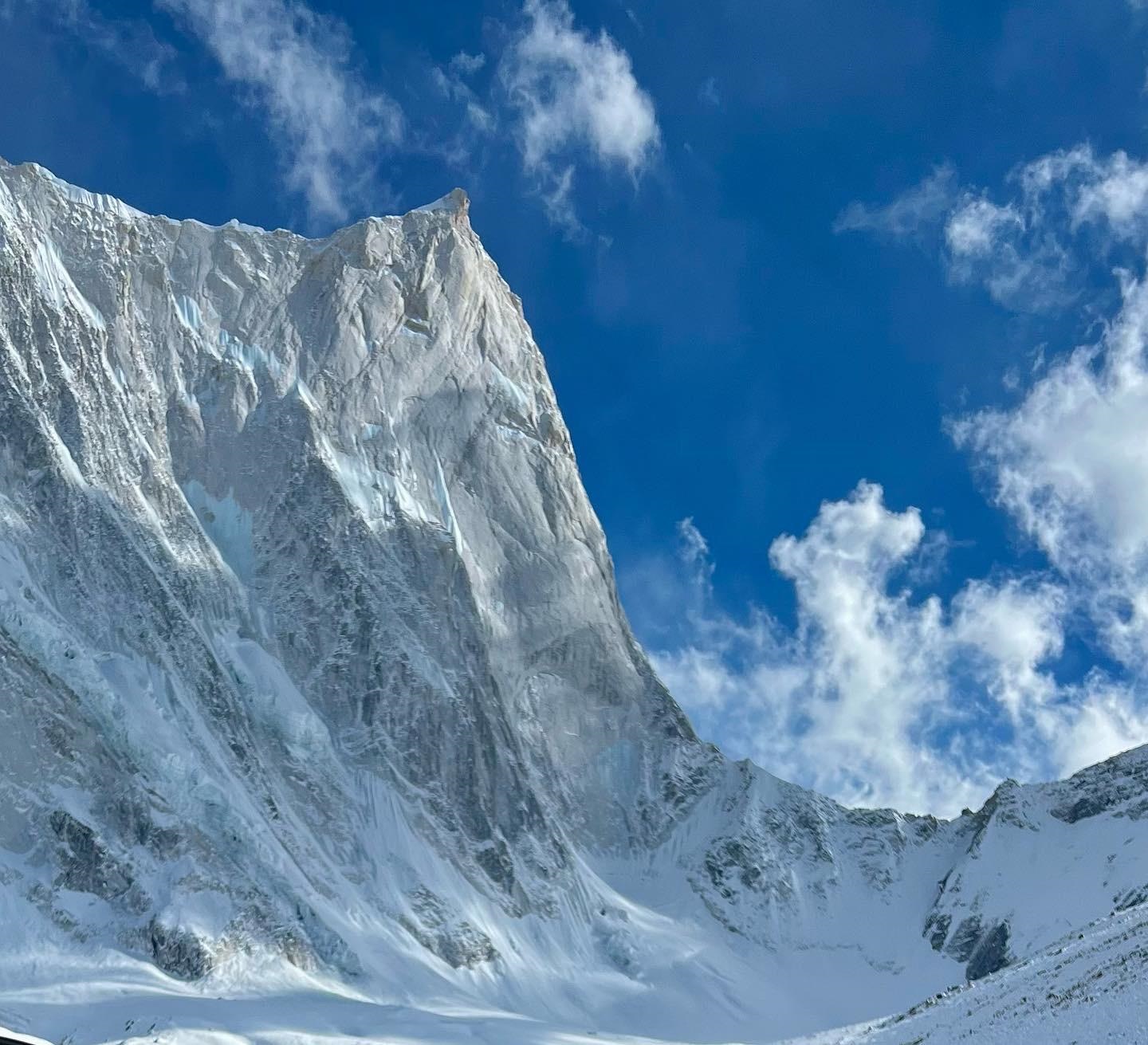
Mt. Changabang
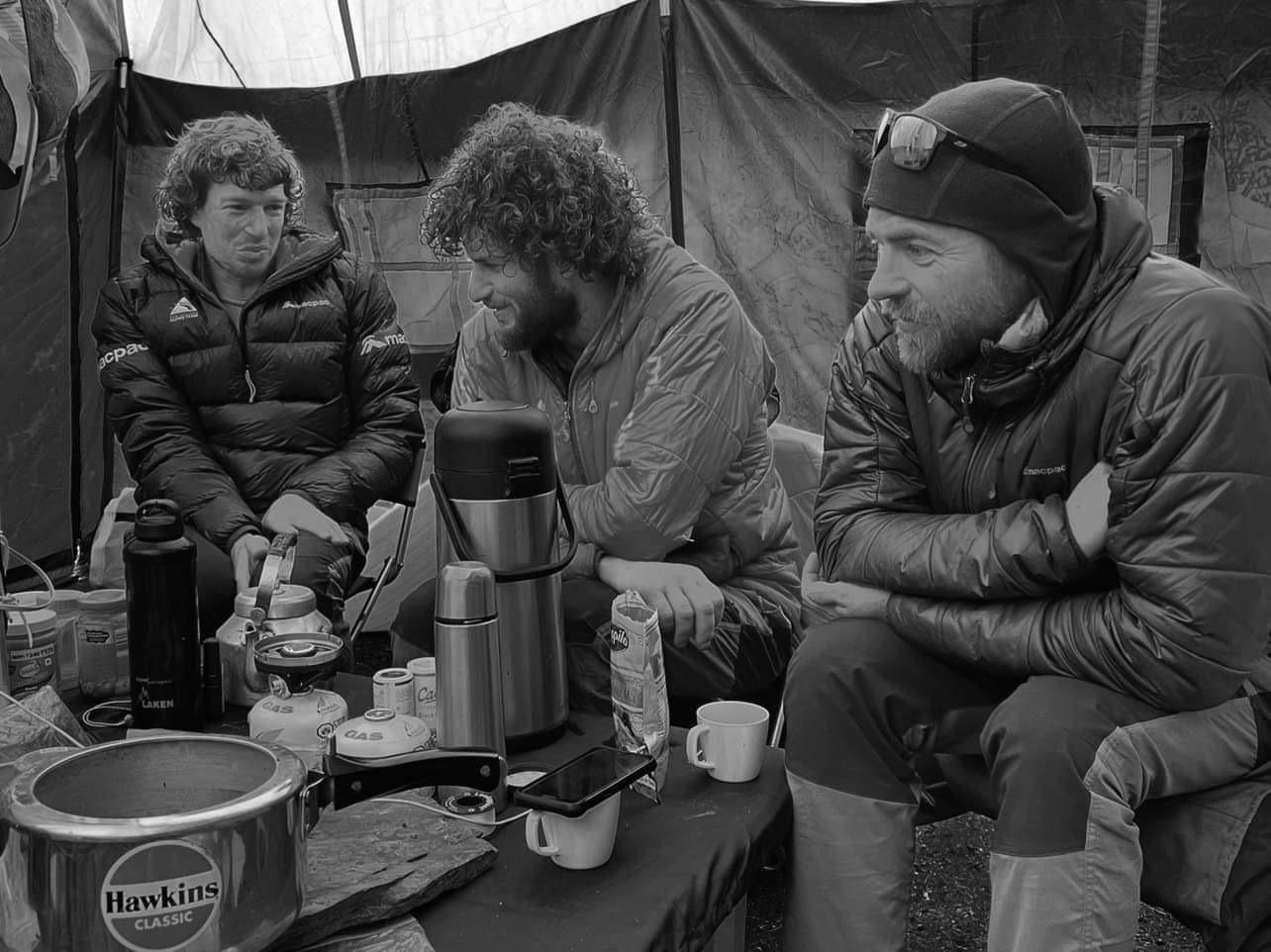
Team at Basecamp: Matthew Scholes, Kim Ladiges & Daniel Joll [L to R]
Interview with Daniel Joll
DW: Many congratulations Daniel, to you and to Matthew Scholes and Kim Ladiges, for your success at what was "the hardest thing that has been done in the Himalayas" (Bonington, 46 years ago).
How does it feel to have topped out on an iconic mountain by a legendary route pioneered by legends?
Daniel: Yeah, we're really excited to have topped out on such an iconic mountain. We've all read The Shining Mountain, and it's a book that inspired us to come to the area and to follow in the footsteps of Boardman and Tasker, and to also see the remnants of what was left on the mountain by them. You find the odd piton here or there. It's very exciting and very humbling to be following in their footsteps.
It's a very cold mountain
DW: Why do you think it took so long, 46 years and twenty-one expeditions, to re-do the route successfully?
Daniel: I think the primary problem with Changabang is one of acclimatization, and two of weather. It's very hard to acclimatize to a good height in that valley, which makes moving fast on the mountain difficult. So, you have to acclimatize in general on the route, which means you're moving slowly, and then you're susceptible to the afternoon storms, the bad weather and the cold. It's a very cold mountain. We all found it incredibly, incredibly cold to climb on the west face. So, I think a combination of all those things is probably what's led to it being a very difficult mountain for people to repeat.
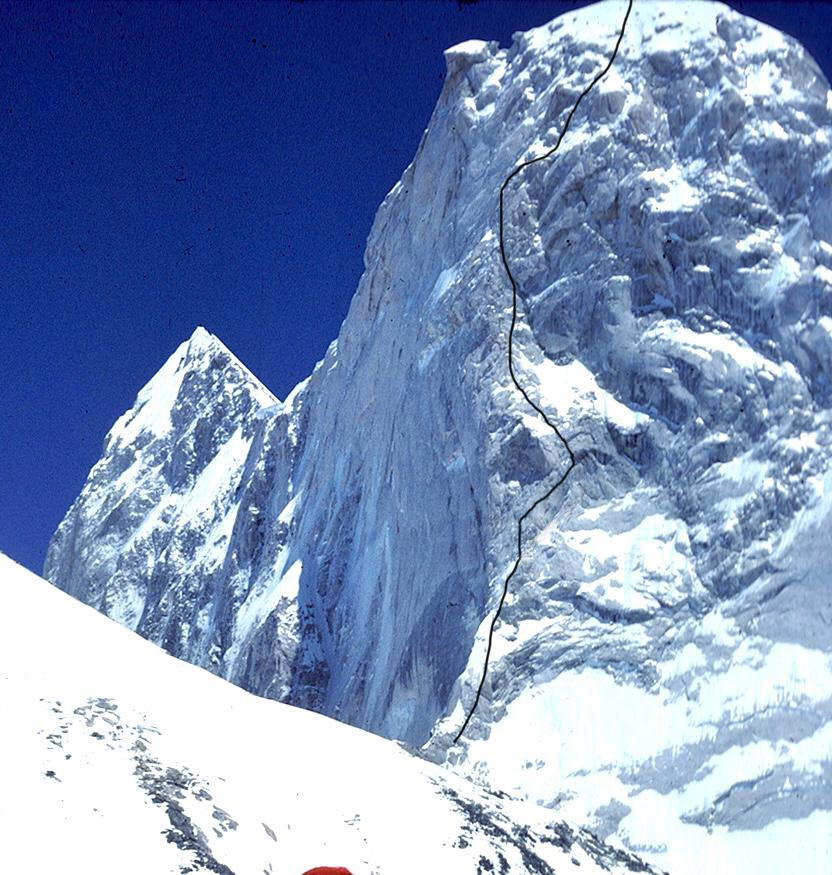
The route
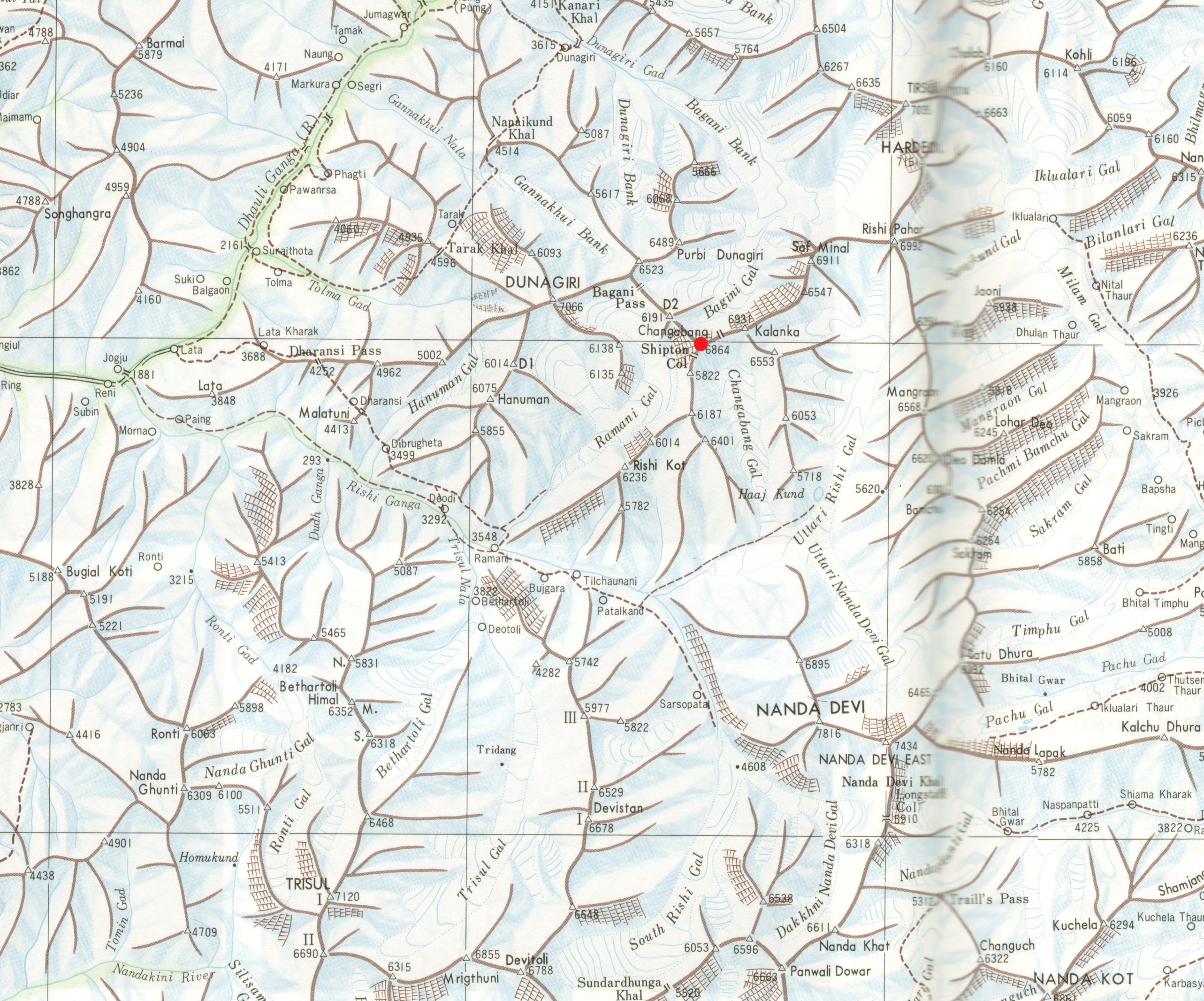
Nanda Devi Sanctuary (Courtesy: Japanese map archive)
It took us seven and a half days to reach the summit and then one and a half days to descend
DW: Though generally accepted that this is a non-competitive sport, sans spectators, and comparisons are odious, two other climbs come to mind. West face of Gasherbrum IV (7925 m) in 1985 by Kurtyka and Schauer and the Shark's fin route on Meru (5400m) in 2010 by Anker, Chin and Ozturk. Now that you have done the third, would you consider Boardman and Tasker's climb to be far ahead of their time, path-breaking, and paradigmatic?
Daniel: The Boardman Tasker ascent was definitely, I would imagine, for 1970s and for the style of altitude climbing, a very difficult climb. We were very impressed, I would say, by their staying power, (so) just their tenacity and their ability to keep grinding out the mountain for that many days. We were on the mountain, it took us seven and a half days to reach the summit and then one and a half days to descend, and we were quite happy to be off the mountain at that point. Had enough of the cold, had enough of the snow, and we were all quite in awe of Boardman and Tasker, and how long they managed to persist, and just work their way up that mountain with the equipment they had, considering we had cams and wires and they would be predominantly nailing in pitons.
DW: Besides being inspirational how helpful was Boardman's award-winning book "The Shining Mountain" in planning your route, equipment, gear and strategy?
DW: Do you think, on a committed climb like this, a three-man team is a safer option than two?
DW: A three-man team eases the workload in terms of leading and load-carrying but does it also alter the team dynamics during vital decision making or does it make it easier too?
Daniel: A three-man team. We thought, and we did think about this is safer than a two-man team. It gives you a lot of physical, I guess, capacity if you need to do a self-rescue. It also allows you to share the load a bit easier. So, we could often have two people out climbing, with one person staying at the portaledge, brewing up water, preparing things for the others when they came back. This does make it easier and it does make it safer. We're also lucky. We have different but similar skill sets. We had a very strong team in the sense that if there ever was a problem with the leader, we always had two backups and it worked really well.
For most of the climb we followed the original line
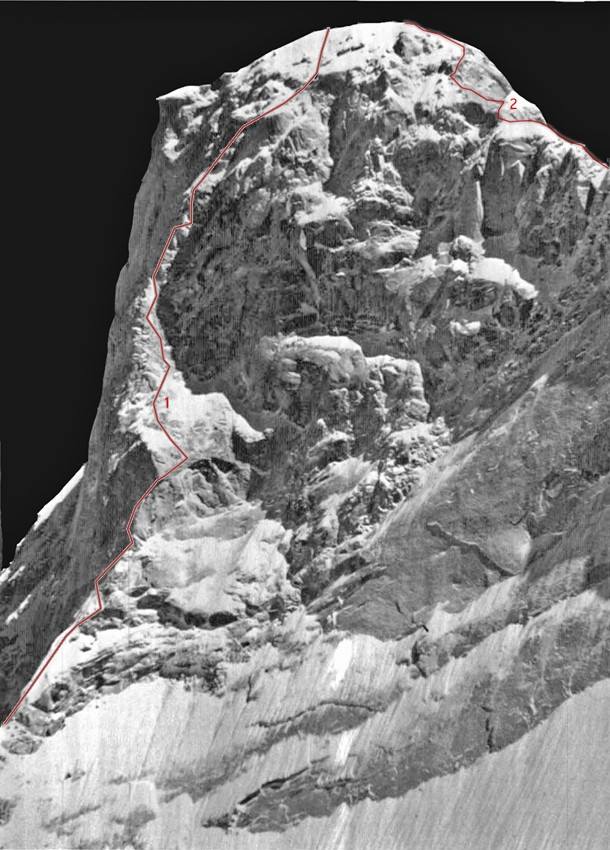
Boardman & Tasker Route (courtesy: https://www.bigwalls.net/)
DW: Please give us a short timeline of your climb from the road-head to BC to summit to BC.
Daniel: Yeah, basic timeline we were in the mountains for 30 days, nine of those spent on the mountain. So the quick way to break that timeline down I guess, nine days up and down on the mountain, then one day with a very large load carry, 40 to 50 kilos each back from ABC to base camp. It's about 10 km of moraine from base camp to ABC. So, the other 20 days of that trip we basically spent taking our gear, like walking up the valley to base camp, then that takes two days, then from day three onwards through to about day 18 we were taking loads from base camp up to ABC, and then also going from ABC up to the Col. So that was part of our acclimatization, we climbed to the Col first before we embarked on the actual ascent of the mountain. Yeah, that's basically how we spent our days, load ferrying, walking up and down the moraine, and then climbing up to the Col and then back to base camp for a rest. From there we set off on our ascent of the mountain.
DW: Though after 46 years the snow and ice conditions must have been different, did you generally follow the same line as the first climb?
Daniel: For most of the climb we followed the original line. However, we varied. We're not exactly sure, but between maybe 15 to 20 pitches (were) different to Boardman and Tasker. And that in general we followed, on the upper mountain, where they chose to go and aid up some rock pillars, we would often pick an ice gully and climb the ice. And that's just different.
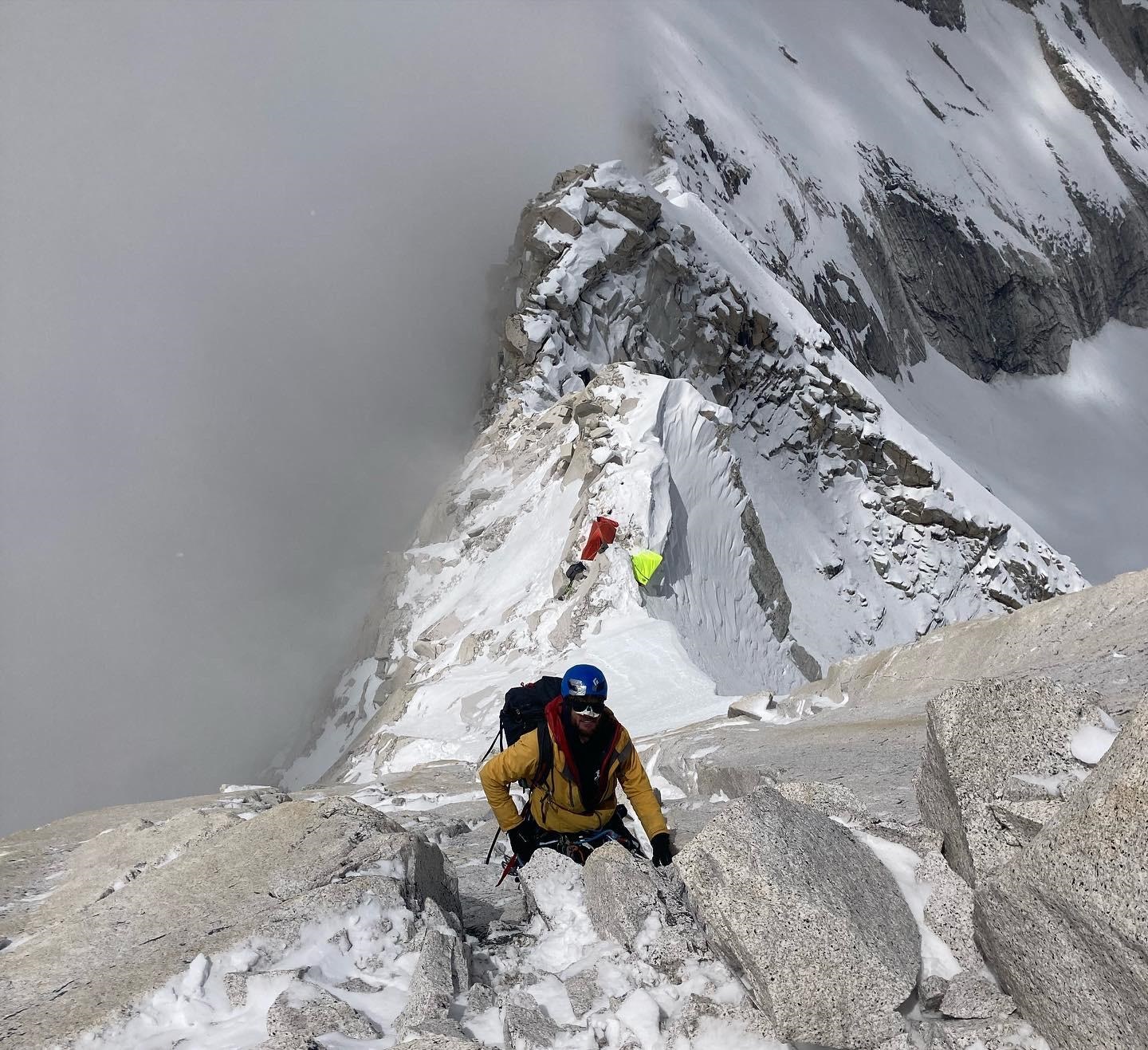
On the West Ridge
DW: Climbs such as these, punishingly difficult and intricate, not only require technical brilliance and state-of-the-art gear but also sustained endurance and commitment. your thoughts please.
Daniel: Having more modern crampons, more modern ice-axe gave us the ability to climb the ice sections probably a lot easier than it would have been for them.
We did get caught in some storms up there. We had one of our portaledges break from being loaded with too much snow one night.
DW: Boardman and Tasker had an ABC at 17,000ft, Camp-I at 18,000ft, and Camp-II at 20.000ft. Where were your camps placed?
DW: They had 3 Hammock bivouacs between Camp-I and Camp-II. Did you have to do the same? Were you using portaledges?
Daniel: For camps, we spent two nights at the Col. This is part of our acclimatization strategy. And then we, in general moved up the mountain, depending on the day, whether we got a storm or whether basically how bad was the afternoon storm. We'd move anywhere from 100 to 300 meters a day, up the mountain, and in a couple of spots, I can't give you the exact locations, but at the core, we spent two nights. And then on, probably like our second camp above that, we spent two nights as well, at the base of the rock tower, that's above the barrier. We did get caught in some storms up there. We had one of our portaledges break from being loaded with too much snow one night. But in general, we took two portaledges, and we also took a tent. So, we did sleep a couple of nights in a tent, using something called an ice hammock, which allowed us to pitch the tent on a very steep slope.
DW: Would you please take us through the climb to the summit and your way down?
DW: Did you come down by the same route you had gone up?
DW: Did you leave behind ropes on your way up to abseil on your way down?
Daniel: We went up and down the mountain via the same route, coming down obviously we're abseiling using V threads and looking for anchors on the mountain.
Yeah, we were all, actually, very emotional on reaching the summit. It had been a very hard month, a very physically hard month ...
DW: Tom Longstaff called it "the most superbly beautiful mountain I have ever seen." Boardman writes about, "... it striking deeper richer chords of awe within him." What were your feelings about this charismatic mountain?
Daniel: Changabang is definitely a beautiful mountain. I mean, that's one of the key reasons that we wanted to climb. Anything that sticks up straight into the sky, like a big rock pyramid, is something that draws a keen climber towards it. And that is definitely the case with Changagbang. We also thought it looked like a very safe mountain in general, these very steep, very rocky, steep ice cliffs, they don't have as many avalanches. You don't usually have as many objective dangers. And that's something that we liked about this peak.
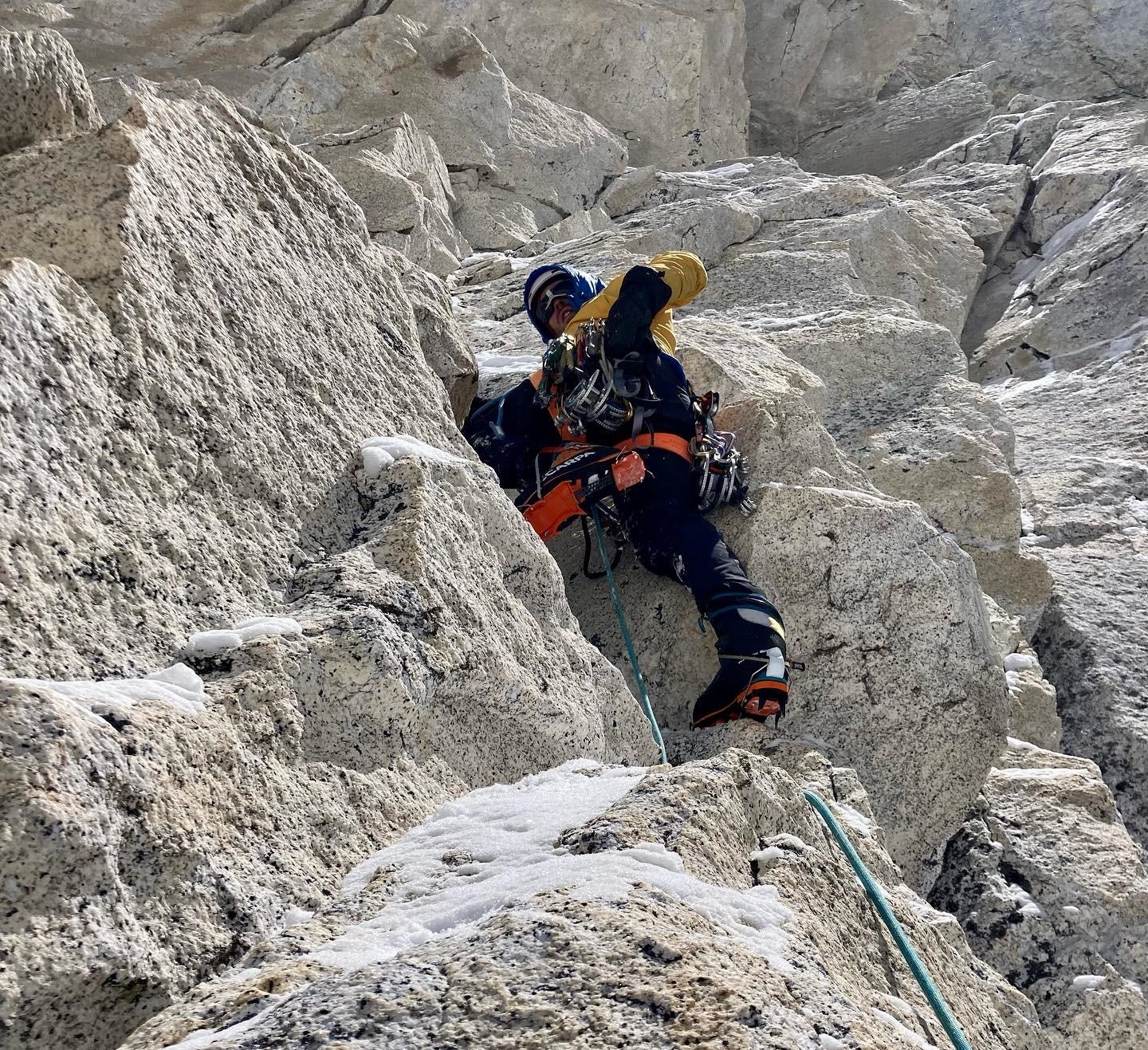
Climbing
We never took it for granted that we were going to get to the summit. So when we did, there was quite a bit of emotion in the air...
DW: Can you recall your feelings on reaching the summit, about a job well done, on the views you got of the legendary Nanda Devi and its forbidden sanctuary?
Daniel: Yeah, we were all, actually, very emotional on reaching the summit. It had been a very hard month, a very physically hard month, of carrying gear, climbing in the cold, really needing to persist, I guess, and have a lot of staying power to actually reach that point of the mountain. We didn't actually expect that we would ever summit. We just kept grinding away each day. And eventually, at some point, we were there. We never took it for granted that we were going to get to the summit. So when we did, there was quite a bit of emotion in the air and we had beautiful views out over Nanda Devi, and across the sanctuary. We spent 5-10 minutes on the summit just chatting and looking around and really enjoyed it.
DW: For the pre-expedition acclimatization exercise you had gone climbing in the Alps. Was it helpful as far as the physical aspect of the climb was concerned?
Daniel: Climbing in the Alps together, first definitely aided our ascent. We had more or less no headaches, none of the usual altitude related issues as we acclimatize . And we put that down to the fact that we'd spend a month climbing in Chamonix and summiting Mont Blanc and a bunch of other peaks along the way.
We've been climbing with each other for eight to ten years now. So, we do understand each other's strengths and weaknesses ...
DW: Did it also help to sort out the inter-personal relationships, each other's strengths, weaknesses, and idiosyncrasies, and did it prove beneficial for the final climb?
DW: During the climb were the three of you candid about doubts and fears, or did you keep them bottled up, lest it affects the other two?
Daniel: Yes, as a group and as a team. We've been climbing with each other for eight to ten years now. So, we do understand each other's strengths and weaknesses and personalities and little idiosyncrasies, so that (it) is beneficial for a climb like this. It helps us to deal with things when you're under stress a lot better, to know each other well and also to have been in similar situations with each other in various parts of the world. So, we actually had a very smoother scene. There were no major issues, no major problems. It kind of just went well day after day, grind it out, and eventually you're there.
having good ice screws, knowing what a V thread is for the descent, definitely makes it easier for us than it did for Boardman and Tasker
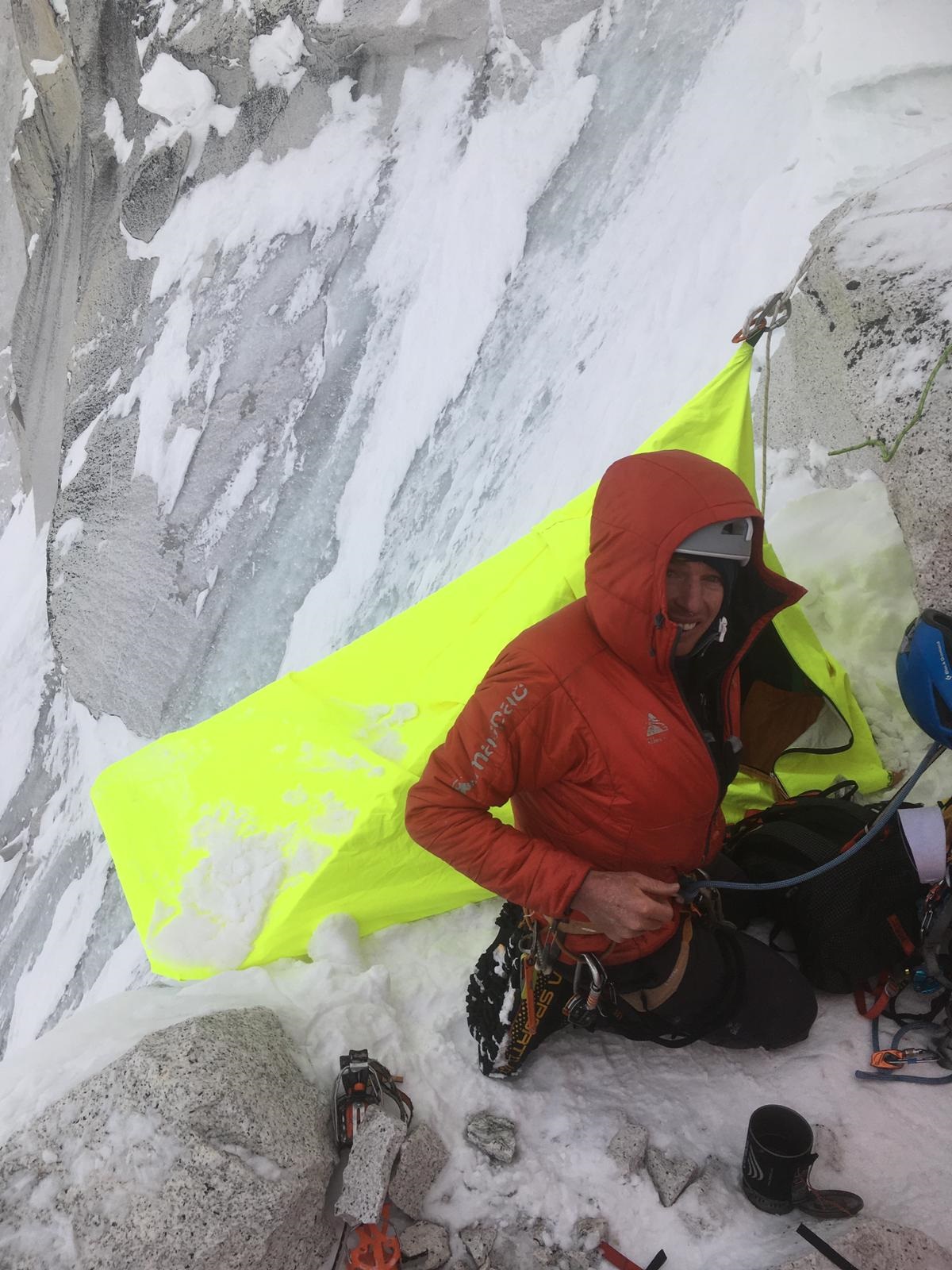
DW: Given the fact that 46 years separate the two climbs, would you concede that developments in equipment, clothing, and gear gave you a better chance?
Daniel: For sure, the advances in technology, I would say in particular having cams with us, having good ice screws, knowing what a V thread is for the descent, definitely makes it easier for us than it did for Boardman and Tasker. Also, just general advances in climbing, like the fact that we were able to climb ice and mixed pitch, is probably a lot easier for us than it was for them at the time. With modern ice axes, all of that helps. I would say that's counted out a little bit by the fact it would also have helped them to have had 600 meters of fixed rope. But that's taking nothing away from their very impressive ascent and we were just happy to be a tacking along behind them and make our way to the top.
DW: In the not-too-distant future, can we look forward to reading "The Shining Mountain, Revisited"?
Daniel: As yet no plans to write The Shining Mountain Revisited. We've got some excellent video footage, so we'll be hoping to put together a little movie from the climb, and hopefully be able to showcase the history of the route and a bit of what Boardman Tasker did, and a bit of what we did.
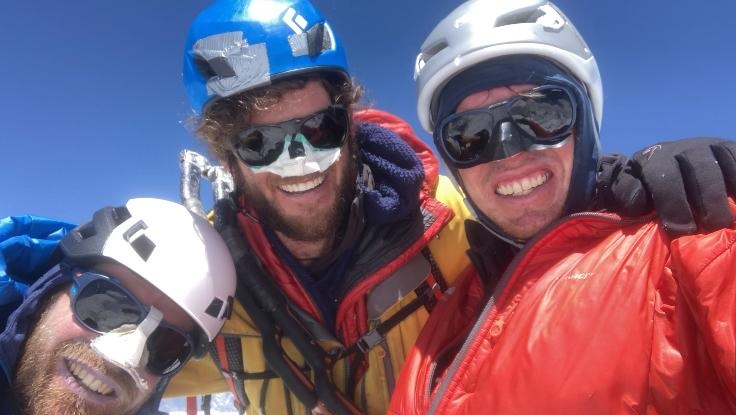
On the summit
DW: Though this interview, for which we remain extremely grateful, was about your climb, references to Bordman and Tasker were found inevitable and unavoidable. Please excuse us for the same.
Many congratulations again for a fabulous climb and hearty wishes to your team for many more safe climbs in the future.
Photo courtesy: Daniel and his team
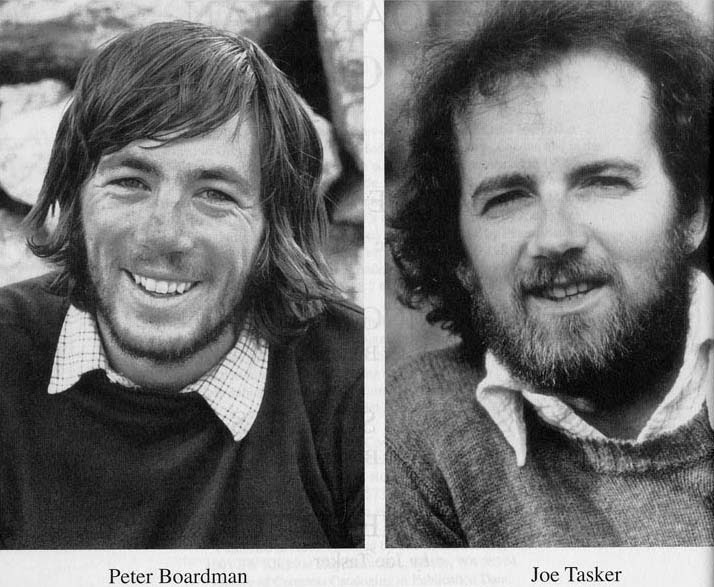
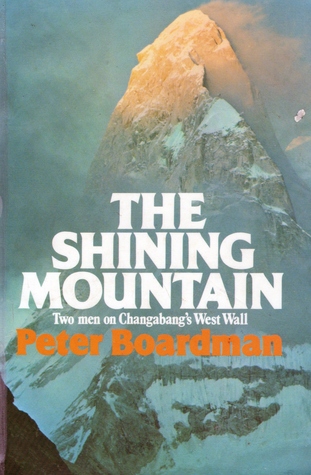
The Shining Mountain by Peter Boardman
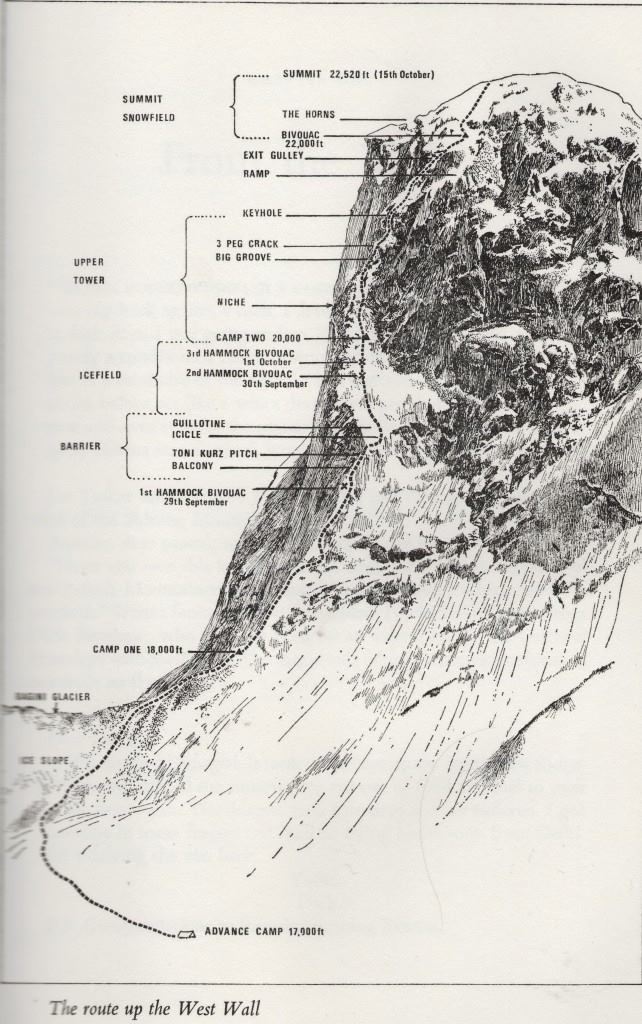
From The Shining Mountain






